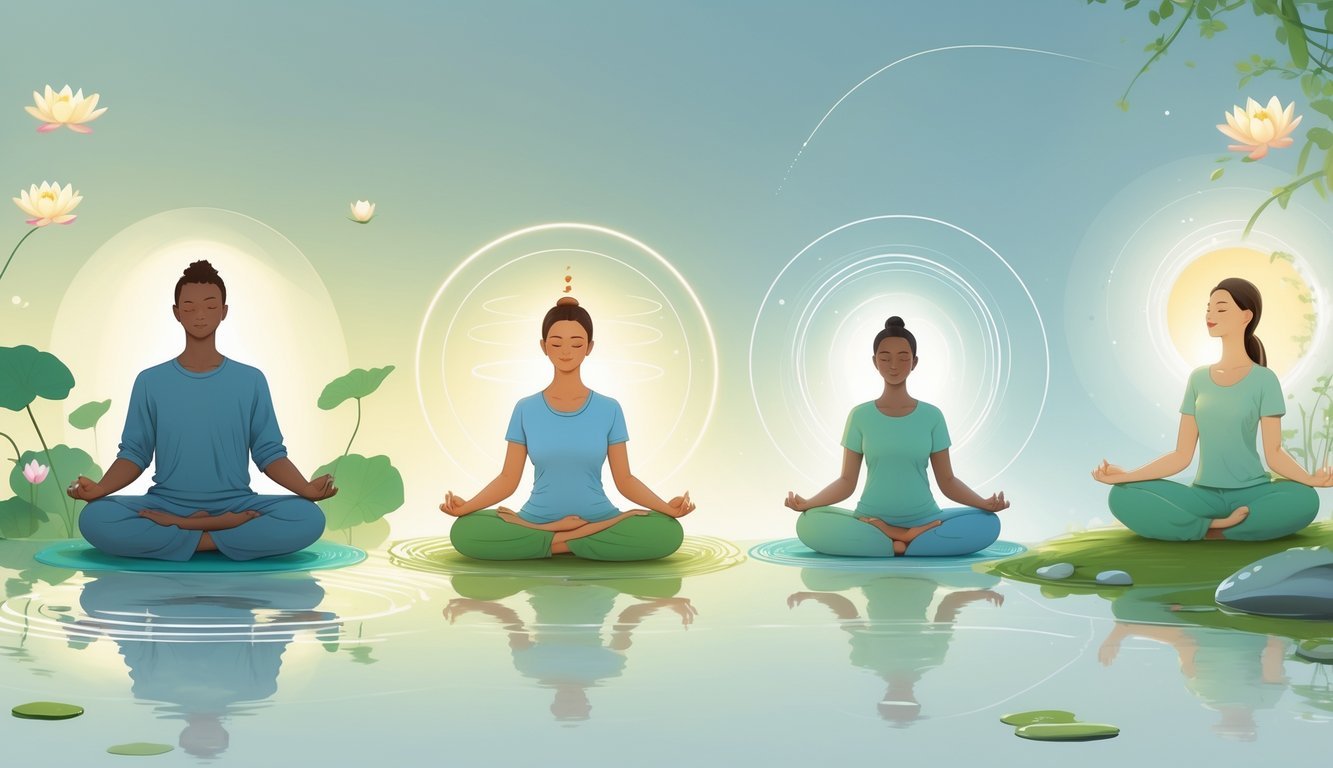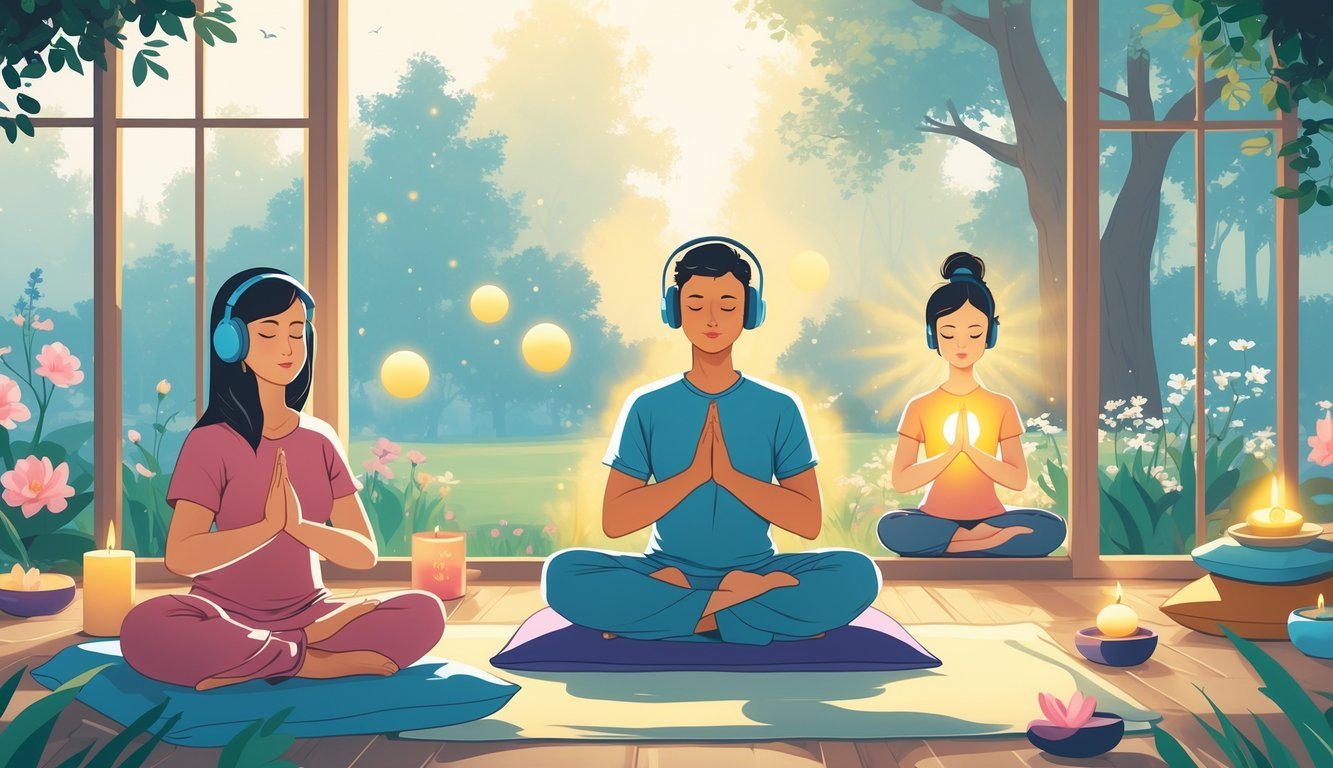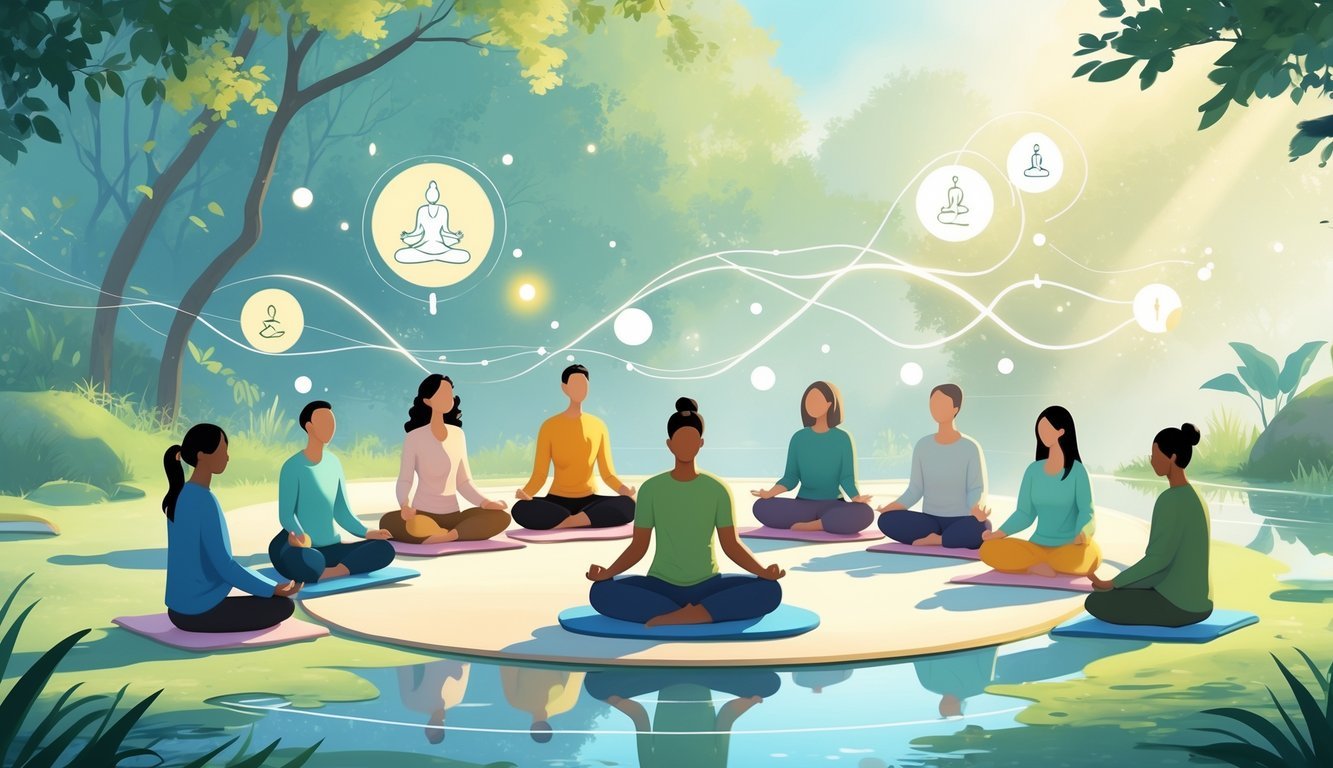Physical Address
304 North Cardinal St.
Dorchester Center, MA 02124
Physical Address
304 North Cardinal St.
Dorchester Center, MA 02124
Meditation trains attention and quiets the mind through various techniques, enhancing focus, reducing stress, and promoting emotional well-being with consistent practice.

Meditation might feel confusing at first, but it’s really just about a few simple practices. At its core, meditation trains your attention and quiets your mind, whether you’re focusing on your breath, repeating a word, or just watching your thoughts drift by without judging them.
You’ll find a bunch of meditation styles out there, each with its own flavor.
Some get you to zero in on one thing; others want you to notice everything around you.
Trying out a few approaches helps you figure out what actually fits your vibe.
Meditation, no matter the style, is really about making space to pause and reset.
Once you land on a technique that clicks, sticking with it gets easier—and you start to notice the benefits.

Are you tired of spinning your wheels and getting nowhere? Simply put, you’re out of sync: you’re out of alignment with your astral configuration.
But: there’s a kind of map that can help you reclaim your alignment. Think of it as your own personal blueprint to success and happiness: a blueprint that will help you live your most amazing life.
Get started here.
Meditation techniques come in all shapes and sizes, but they all work to calm your mind and sharpen your focus.
Some are as simple as breathing deeply, while others have you repeat a word or scan your body for tension.
These practices can help your brain and boost your sense of well-being.
There are plenty of types of meditation to try, especially if you’re new to it.
One popular method is mindful breathing, where you just pay attention to each breath in and out.
You might also try body scan meditation, which means you focus on different parts of your body, noticing how they feel.
Another option is loving-kindness meditation, where you send kind thoughts to yourself and others.
Yoga-based meditations mix movement with breath control.
Some traditions, like yogic meditation, have you focus on a single point or mantra to sharpen your attention.
Meditation brings real health perks.
It calms your nervous system and helps reduce stress.
You might notice it gets easier to manage your emotions and feel less anxious.
Practicing meditation regularly can boost your brain health.
It may help your memory, focus, and even keep you more organized.
A lot of beginners notice better sleep and a calmer mood after just a few sessions.
You might even see physical benefits, like lower blood pressure.
The more you practice, the more these effects seem to grow.
Most meditation techniques guide your mind to focus.
That focus might be on your breathing, a mantra, or even a mental image.
When you concentrate during meditation, you build up your mental muscles and cut down on distractions.
This leads to better focus and less stress.
Some practices ask you to notice your thoughts and feelings gently, without judging them.
That helps you understand your mind and stay calm when things get tough.
Even short sessions—just two minutes a day—can start teaching your brain to relax and pay attention.

You can find all sorts of meditation methods that help you focus, relax your body, and lift your mood.
These techniques use different tools—like breath, sound, movement, or guided instructions—to help you unwind and train your attention.
Mindfulness meditation invites you to focus on the present moment without judgment.
You pay attention to your breath, your body, or your thoughts as they come and go.
This practice makes you more aware of your feelings and can ease stress.
To try it, sit somewhere quiet.
Feel your breath moving in and out.
If your mind wanders, just notice it, then gently bring your focus back.
You can use apps like Headspace for guided sessions—makes it less intimidating to start.
Practicing for 5-10 minutes a day helps you build a steady habit.
Guided meditation uses audio or video to walk you through the process.
A teacher’s voice helps you relax, focus, or picture a peaceful place.
It’s great if you want clear direction or have a hard time focusing alone.
You’ll find guided meditations on apps, YouTube, or even in classes.
Pick a session based on what you need—stress relief, better sleep, whatever’s on your mind.
Just follow along and let the instructions lead you.
Transcendental meditation has you silently repeat a mantra—a special word or sound.
It’s meant to settle your mind and help you reach a deep state of rest.
To do it, sit comfortably and close your eyes.
Repeat your mantra softly in your head for about 20 minutes, twice a day.
Don’t force anything—just let thoughts come and go.
Certified teachers usually give you a mantra and show you the ropes, so you might want to check out a class.
Focused meditation has you zero in on one thing—a sound, an object, or an image—to cut down distractions.
Visualization takes it a step further by having you imagine calming scenes or positive outcomes.
You could stare at a candle flame, repeat a mantra, or picture a peaceful place.
Visualization might mean imagining yourself succeeding at a goal or feeling warmth spread through your body.
Practice in a quiet spot, and if your mind drifts, just bring it back.
Movement meditation blends gentle activity with focused attention.
Walking meditation asks you to move slowly and notice each step.
In walking meditation, walk at a relaxed pace and pay attention to how your feet feel on the ground.
You might also try qigong or tai chi, which mix movement and breath to help you relax.
Movement meditation is perfect if sitting still just isn’t your thing.
Loving-kindness meditation helps you grow feelings of kindness for yourself and others.
You repeat phrases like “May I be happy” silently.
Start with yourself, then think of close friends, strangers, and even people you’re not fond of.
Practicing this kind of compassion can lift your mood and help you feel more connected.
Zen meditation, or zazen, has you sit up straight and watch your breath or thoughts without reacting.
Vipassana, also called insight meditation, asks you to observe body sensations and mental patterns to understand what’s really happening.
Both need patience and a quiet spot.
You might sit on a cushion with your eyes partly open.
These techniques help you see things clearly and let go of negative thinking.
Progressive relaxation asks you to tense and relax each muscle group to let go of tension.
The body scan guides your focus slowly through your body, noticing sensations without changing anything.
Lie down or sit comfortably in a quiet room.
Tense each muscle group for a few seconds, then let it go.
Afterward, mentally scan your body from head to toe.
This approach helps you unwind and can even improve your sleep.
Spiritual meditation connects you to something bigger—maybe a higher power or your inner self.
It might involve prayers, sacred texts, or focusing on spiritual ideas.
Chakra meditation has you picture light or colors in certain spots on your body.
You can use mantras, visualizations, or listen to guided chakra meditations online.
Sit quietly and focus on each chakra, from your root up to your crown, picturing its color or energy.
This can help balance your energy and deepen your spiritual side.

Meditation techniques usually rely on simple steps—breathing, noticing, and certain practices—to help with anxiety, sleep, stress, and mental health.
You can find something that fits your needs and jump in whenever you’re ready.
Start with short sessions of deep breathing.
Try counting your breaths or using guided meditations.
Five minutes a day is enough to begin—add more time when you feel ready.
Mindfulness meditation and focused breathing, like the 4-7-8 breath, help calm your mind.
These methods make it easier to stay present and cut down on anxious thoughts.
Body scan meditation relaxes your muscles and releases tension.
Try it in bed by slowly focusing on each part of your body as you wind down.
Loving-kindness meditation encourages positive feelings for yourself and others.
Doing it regularly can boost your mood and support emotional health.
Focus on your breath.
Count your breaths or use guided imagery to ease stress.
A few minutes daily, if you stick with it, really helps.
You can usually find helpful guides and free PDFs on sites like r/Meditation or different mindfulness blogs.
They often give you step-by-step instructions.
Plus, you’ll get some community support along the way.